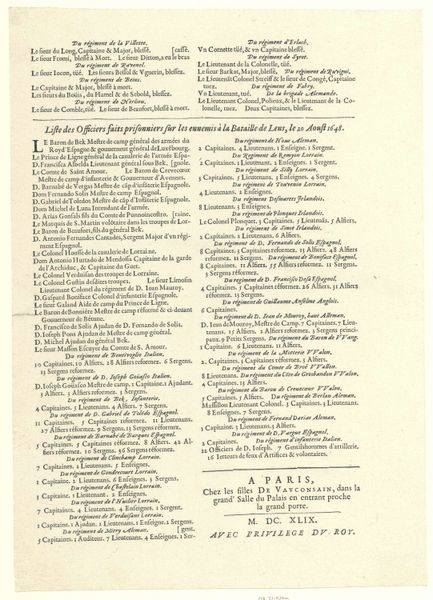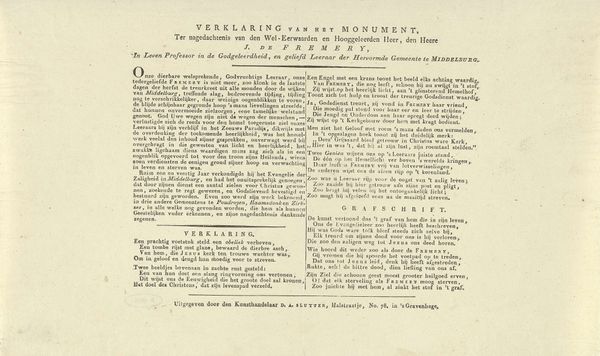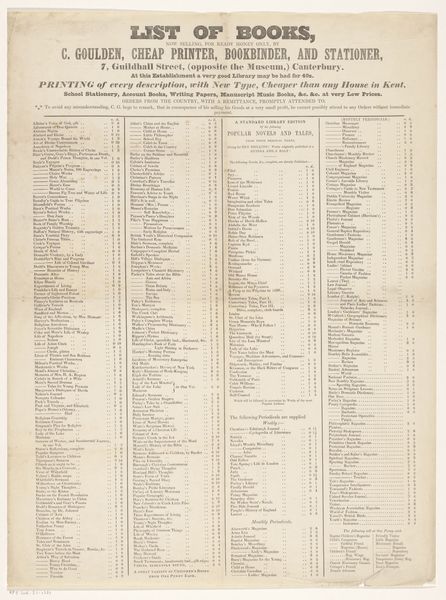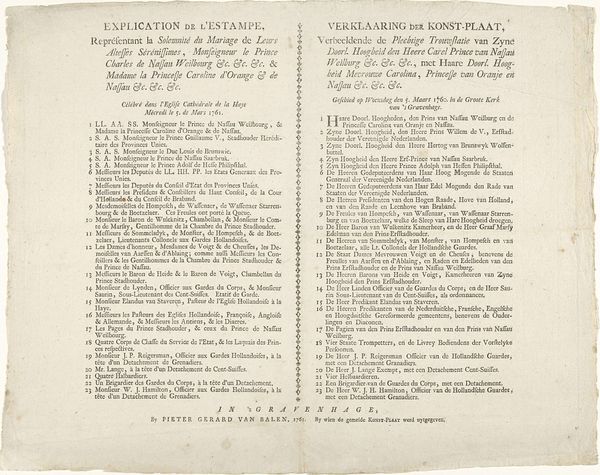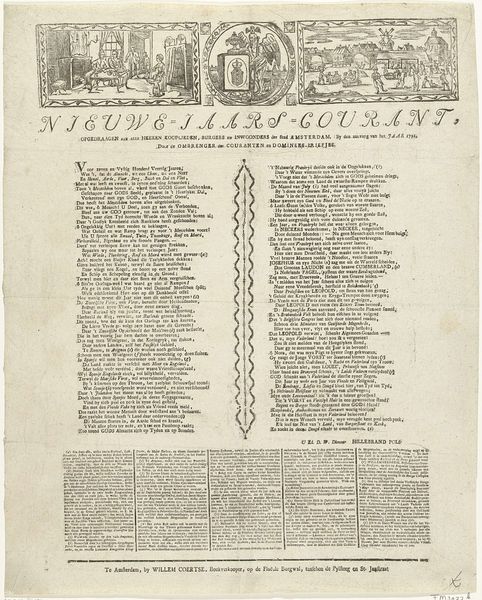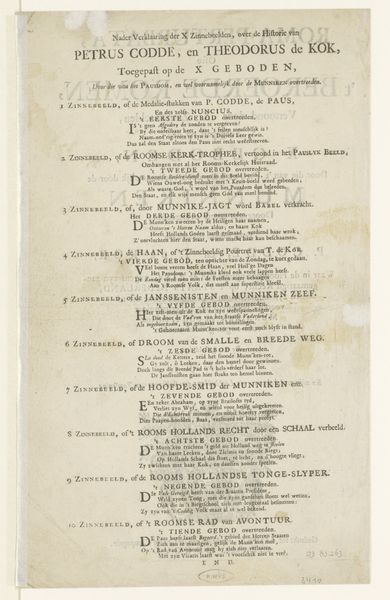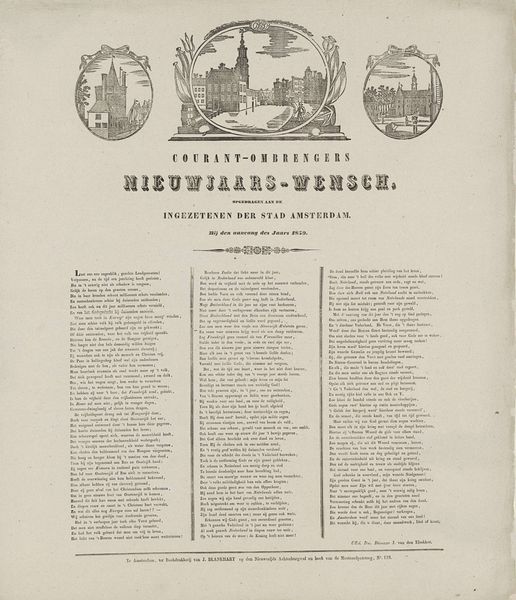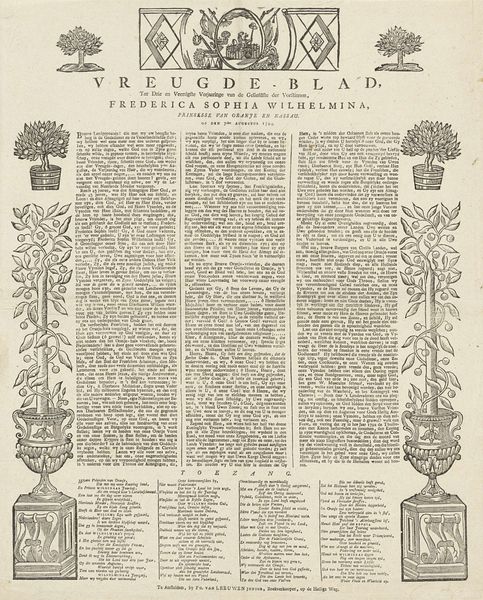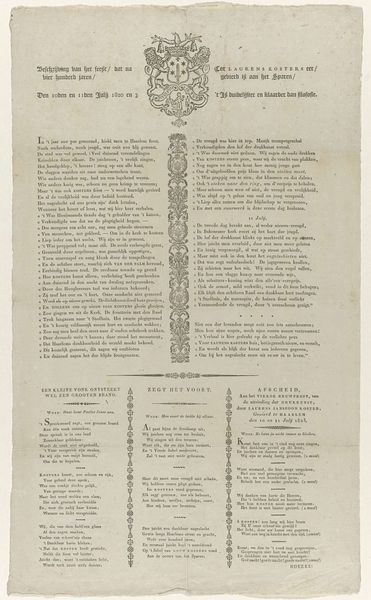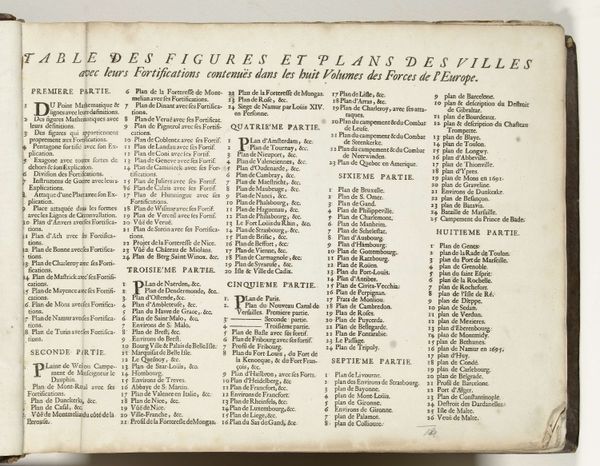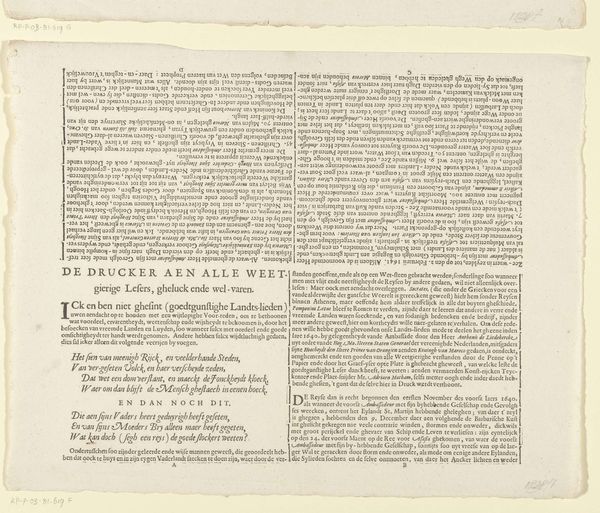
Verklaring van de zinneprent rond huwelijken van de zoon en dochter van Willem V, 1790-1791 1790
0:00
0:00
johanneslefrancqvanberkhey
Rijksmuseum
Dimensions: height 550 mm, width 435 mm
Copyright: Rijks Museum: Open Domain
Editor: Here we have a 1790 engraving by Johannes le Francq van Berkhey, titled "Explanation of the Allegorical Print Regarding the Marriages of the Son and Daughter of Willem V." It's densely packed with text. What stories do you think this engraving is trying to tell, and to whom? Curator: This engraving provides us with a fascinating glimpse into the political and social theater of the late 18th century. It is deeply rooted in the power structures of the time. Royal marriages weren't just about love; they were strategic alliances. Look closely at the framing of the Orange family here - how does the text and imagery work to construct an idea of "Orange" identity and its relationship to freedom and liberty? Consider the intended audience – who was the artist trying to reach with this message, and what kind of cultural capital was required to fully understand it? Editor: So, it’s less about celebrating love and more about projecting an image of power and stability? Curator: Exactly. Think about the social and political climate in the Netherlands at this time. There were growing tensions between the Orangists and the Patriots. How might this print function as a form of propaganda, bolstering support for the House of Orange amidst this unrest? The inscription ‘Oranje aan de Vryheid’ suggests this. Can we trust that message at face value, or must we contextualize the family's claims around "freedom"? Editor: I see! So it’s not just a document of a wedding, but an intervention in a larger political debate? Curator: Precisely. It uses the spectacle of these marriages to reinforce the legitimacy and desirability of Orangist rule. What’s powerful about this print is its ability to reveal the entanglement of personal events and larger political narratives, all through the lens of power, gender, and social order. Editor: I hadn’t considered the propaganda element. That adds a whole new layer of interpretation for me. Curator: Indeed! Examining these artifacts as constructions of power allows us a more nuanced and insightful historical reading.
Comments
No comments
Be the first to comment and join the conversation on the ultimate creative platform.
